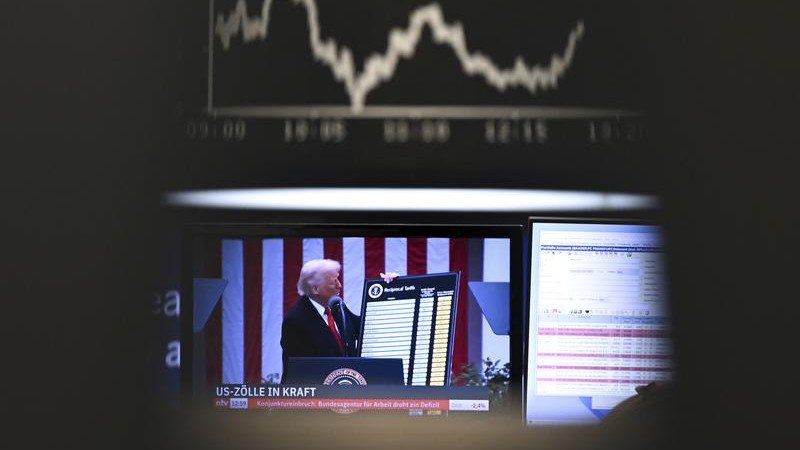Even with high tariffs, Trump’s trade war suddenly is starting to look not so scary on Wall Street

US tariffs on incoming goods look to be settling in only slightly less than what President Donald Trump had threatened in April, but the difference has been enough to ease some of Wall Street’s worst recession fears.
With the US-European Union trade deal over the weekend, it now appears that the effective tariff rate, or the net impact aside from the nominal level, will end up in the 15 per cent-20 per cent range.
That’s well above the low single-digit rate in place at the beginning of the year, but well off the feared 25 per cent rate or worse that could have happened as a result of the April 2 announcement.
Sign up to The Nightly's newsletters.
Get the first look at the digital newspaper, curated daily stories and breaking headlines delivered to your inbox.
By continuing you agree to our Terms and Privacy Policy.Economists had feared that aggressive tariffs Mr Trump proposed in his April 2 “liberation day” announcement would spike inflation and lead to a pronounced slowdown or recession.
But doomsday pronouncements around the tariffs have abated since then. Economists cite a strong global growth backdrop, a less-than-expected, long-term inflationary impact of the tariffs and a general easing in financial conditions as reasons for why the landscape looks less dire.
JPMorgan Chase, for instance, has lowered its recession risk from a liberation-day level of 60 per cent down to 40 per cent— still higher than normal, but at least less pessimistic.
“Tariffs are a tax hike on US purchases of foreign goods, but this tax drag is not likely to be large enough to derail the US expansion,” JPMorgan chief economist Bruce Kasman said in a note.
Like others, the bank had expected the Trump tariffs to result in a damaging round of retaliation globally. “But an expected rise in global trade restrictions has turned into a modest step toward opening markets for the US,” Mr Kasman said.
Tariffs still a danger
Commentary around Wall Street following the US-EU deal for 15 per cent tariffs echoed the belief that the recession risk had dimmed, even if tariffs still have the strong potential to exert a stifling impact on growth.
“We still believe the most likely outcome is slow growth and firm inflation: Not a recession, but a backdrop where the adverse effects of trade and immigration controls on growth outweigh the boost from deregulation and fiscal largesse,” Morgan Stanley strategist Michael Zezas wrote.
To be sure, the final outcome of the trade negotiations is far from clear.
There are still a slew of other issues that need to be settled before Mr Trump’s imposed August 1 deadline, which could still result in significant levies affecting major US trading partners, including Japan and others.
Further aggression in the trade skirmishes “could easily tip the scales toward a mild recession,” Mr Zezas added.
“In sum, we see outcomes for the US economy skewing toward a slowdown, but with more clarity on the fiscal situation and deficits now front-loaded, the risk of a substantial recession is easing.”
The US-Europe deal will give the Federal Reserve more to chew on this week when it discusses the impact that tariffs will have on inflation.
Since Mr Trump has taken office, the Fed has held its benchmark short-term interest rate steady, in large part because policymakers are cautious over the impact tariffs will have on inflation.
Markets don’t expect any action at the meeting, which concludes Wednesday. But they will be watching for clues on the Fed’s further intentions, which will be influenced by where the final effective tariff rate lands.
The Fed is expected to approve a rate cut in September, and the chances of that happening seemingly would increase if the economy weakens while inflation is held in check.
“Effective tariff rates are significantly higher than they were at the start of the year,” Citigroup economist Andrew Hollenhorst wrote.
“But with major trading partner tariffs stabilising closer to 15% than the much higher rates proposed on April 2, markets and Fed officials will be increasingly confident that the drag on growth and upside risk to inflation will be modest.”
